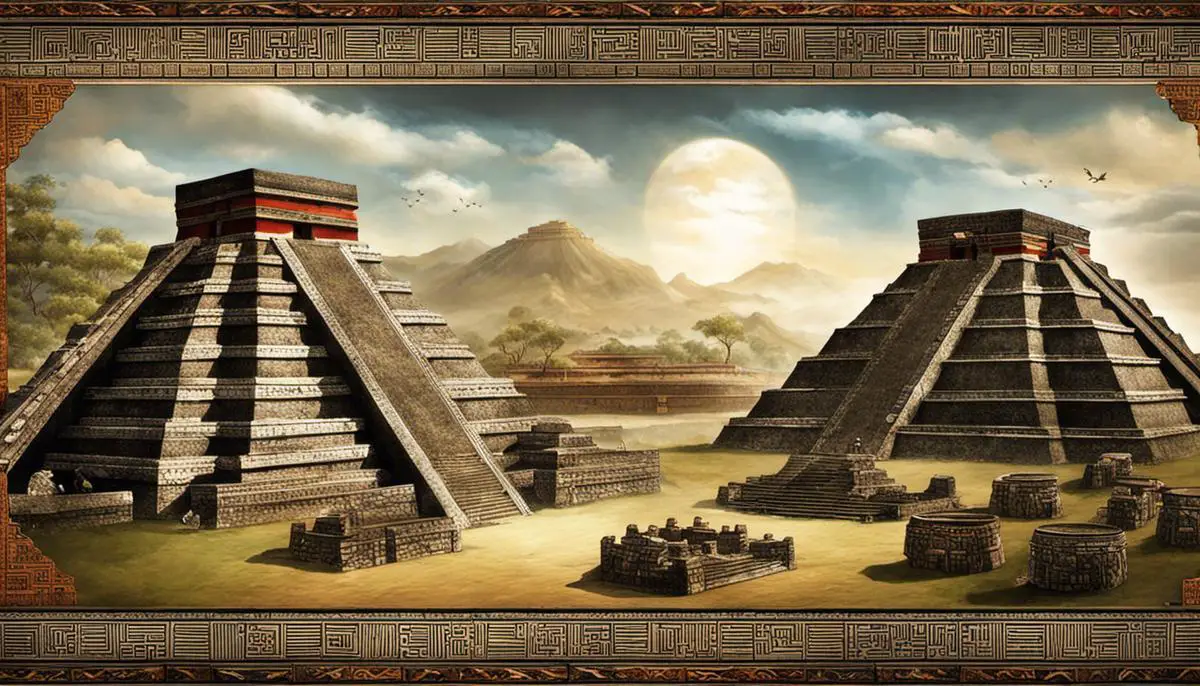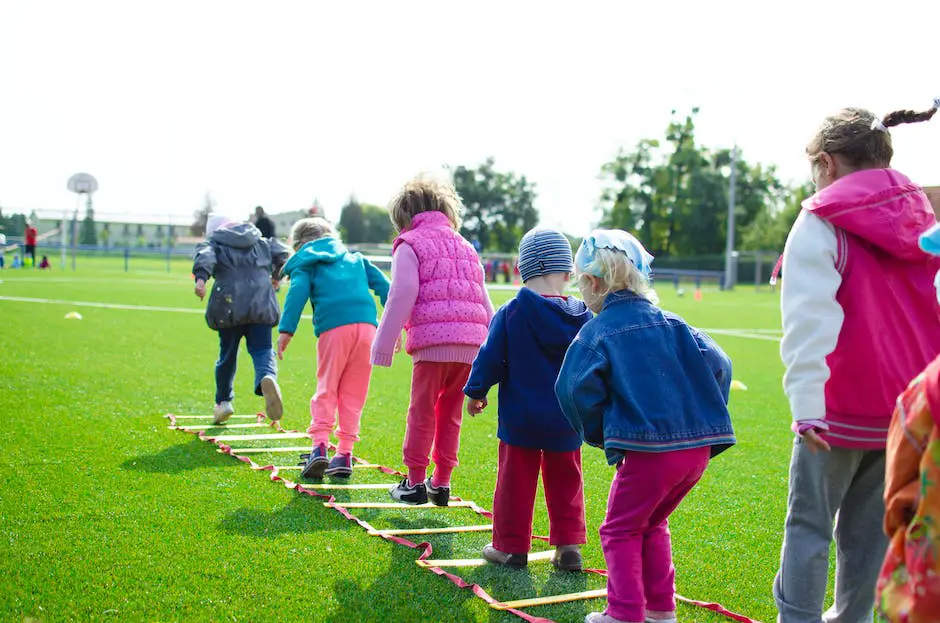Embarking on a journey to master the ancient game of Tlachtli combines an intrigue for history and a love for strategy and skill. A primary pursuit of understanding and skill enhancement, getting into the depths of this historic Aztec pastime offers an avenue into the cultural, symbolic, and religious facets of Aztec society. Tlachtli, a game steeped in tradition, ritual, and tactics, captivated the ancient world and is now an engaging and challenging endeavor for enthusiasts and hobbyists alike. With an exciting blend of advanced strategies and a profound historical background, the game brings a blend of the cerebral and the physical dimensions. By coupling this historical understanding with practice and simulation, you are setting yourself on the path of not only knowing about Tlachtli but potentially mastering it.
Understanding the Basics of Tlachtli
A Glimpse into the Past: Tlachtli’s Place in Aztec Society
Tlachtli, known today as Ullamaliztli, was a significant component of the Aztec culture, dating back as early as 1400 BC. It wasn’t only a game or recreational activity for the Aztec population, but a ceremonial event holding high religious significance. Deities like the rain god Tlaloc and the sun god Huitzilopochtli were often invoked during Tlachtli matches via rituals performed before, during, and after the game. Winning in Tlachtli was not just a sport victory, but a triumph in a spiritual battle, making the understanding of its cultural context essential.
Decoding the Game: Basic Rules and Gameplay of Tlachtli
Tlachtli was typically played on an I-shaped court known as Tlachtli court. Two teams, usually consisting of two to seven players each, would compete. The objective was to pass a rubber ball through a stone ring located at the ends of the court’s central wall. What adds complexity to the game is that players were forbidden from using their hands or feet. They were permitted to use their hips, knees, elbows, and head to keep the ball in motion.
The rules of Tlachtli dictated that the ball must not hit the ground; hence, players were tasked with maintaining the ball’s continual movement. Each match could last several hours until one team successfully breached the opposing side’s ring. Furthermore, players adorned traditional protective clothing such as yokes, knee pads, and palm guards, known as hua chimaloni.
Implementing Strategy: Winning Tlachtli
Given the nature of the game, physical strength, agility, and skill were crucial. However, the key to winning Tlachtli lay not only in one’s athletic prowess but also in strategic planning and teamwork. Players needed to display quick thinking, predicting the path of the rubber ball and position themselves accordingly. As a game mostly depending on the hip, incorporating a swiveling motion when hitting the ball could help attain higher force and precision. In addition, the ability to communicate effectively with team members could serve as a definite advantage, facilitating coordinated efforts that boost the chance of scoring.
Understanding the Equipment: Towards the Perfect Tlachtli Match
The ball, carved out of rubber, varied in size but was usually quite heavy, weighing between three to six pounds. To enhance your gameplay, it’s crucial to familiarize yourself with handling and maneuvering such a heavy object using only certain body parts. Similarly, becoming acquainted with the stone rings—placed high on the court—will help you grasp the difficulty level of the task.
The practice of Tlachtli today would also require making minor adjustments to the game to suit modern times while preserving its ancient roots. For example, protective equipment equivalent to what the Aztecs wore should become a standard to ensure player safety throughout the match.
Mastering Tlachtli revolves around the comprehension and respect of its past significance, the ability to adapt its challenging rules into one’s strategy, and proficiency in handling the equipment used.

Advanced Tactics and Strategies
Master the Essential Basics of Tlachtli
Before jumping into advanced strategies and tactics, it’s crucial that you have a strong understanding of the fundamentals of Tlachtli. This includes knowing the rules, understanding the playing field, and being adept at controlling and maneuvering the rubber ball. Don’t underestimate the power of practice – getting the hang of ball control, in particular, can significantly boost your chances of success in the game.
Study the Ancient Techniques
Historical accounts of Tlachtli games played during the Aztec era offer excellent insights into gameplay and techniques. It’s widely known that the Aztecs treated this game as both a sport and a ritual. Therefore, they developed unique strategies to outsmart their opponents and appeal to their gods. By studying these accounts, you can learn about their formations, defensive strategies, the ways they attacked, and how they manipulated the ball to their advantage.
Extrapolate from Modern Ball Games
Look to most modern ball games, such as soccer and basketball, since they employ strategies that can be applied to Tlachtli. For instance, in soccer, the strategic placement of players, the use of deft footwork to control the ball, and the emphasis on team coordination can guide your approach to Tlachtli. With the right adaptation, such strategies can lead to a more solid and unpredictable gameplay in Tlachtli.
Implement Advanced Movement Tactics
The game of Tlachtli involves a lot of movement, so always be on your toes. Developing your own set of advanced movements can make it harder for your opponent to predict your next move. These tactics can involve sudden changes in direction, momentarily halting, or high-energy bursts of speed. Remember, the unpredictability of your movements can be a winning edge.
Integrate Psychological Strategies
Tlachtli isn’t just about physical prowess; it’s also a mental game. Advanced players use a combination of deception, feints, and psychological tactics to keep their opponents off balance. By understanding the mental side of the game, you can intimidate your opponent and gain an upper hand.
Practice Team Coordination and Communication
Lastly, Tlachtli is a team sport. This means effective communication and coordination among team members is essential for success. Develop a set of signals or codes to efficiently convey your positions, strategies, and warnings to your teammates. A team that communicates well could outmaneuver an opponent with superior individual skills.

Practicing Gameplay
Understanding the Game Tlachtli
Tlachtli, also known as Ulama, is a traditional ball game played by the Aztecs and other Mesoamerican cultures. The game was a crucial part of Aztec society, often played during religious festivals and ceremonies. The aim of Tlachtli is to keep the rubber ball in motion without it touching the ground, using only your hips, knees, and elbows.
Establishing a Practice Space
To learn how to play Tlachtli and start practicing, you first need to create a makeshift playground. Ideally, the field should be an elongated rectangle, around 60 meters long by 10 meters wide. This may not be feasible in your backyard, but a scaled-down version will work as well. You can use chalk or tape to designate your playing area. Across the middle line of the playing area, you need to erect a low stone wall or other physical barrier.
Creating the Game Equipment
The ball used in Tlachtli is a solid rubber ball weighing around 3kg. Obviously, such balls may be difficult to obtain. A suitable substitute could be a regular playground ball or even a soccer ball, keeping in mind that the purpose of the game is to keep the ball in motion without using hands or feet.
Practicing Hitting and Defending
As players can only use their hips, knees, and elbows to propel the ball, the consequences of a poor hit can be losing your balance or injuring yourself. It’s important to practice hitting the ball comfortably. Start by practicing on a wall or with a partner. Gradually pick up the pace as you become more comfortable. Work on your defense as well, aiming to intercept the ball using the allowed parts of your body.
Developing a Strategy
Strategy plays a large role in winning at Tlachtli. Work on developing game tactics, such as where to position yourself on the field, how to anticipate the path of the ball, and different ways to hit the ball to send it in desirable directions. Include feints and decoy moves in your strategy to outsmart your opponent.
Exploring Digital Simulators
For those unable to create a physical play area, or simply interested in a modern adaptation, digital simulators are a potential option. Though Tlachtli might not be available as a pre-made game, you can utilize game creation software like Unity or Unreal Engine to create your custom simulator. This not only enhances your understanding of the game mechanics but also improves your digital skills.
It’s important to remember that Tlachtli was more than just a game to the Aztecs, it was a cultural and religious event. So, while you’re practicing and improving, you’re also engaging with an important part of history.

Simulation and Scenario Analysis
Understanding the Game Tactics of Tlachtli
The Aztec game of Tlachtli, also known as Ullamaliztli, is a ball game that involves strategic planning and quick thinking on your feet. This game, often compared to modern-day soccer or basketball, requires players to score by driving a ball through a circular stone hoop using only their hips, knees, and elbows. Familiarizing yourself with the rules, scoring systems, and player movements will assist in maximizing your winning chances.
Mastering Basic Skills and Strategies
The success in Tlachtli largely depends on personal strengths and collective team coordination. Start by focusing on improving your agility, speed, strength, and endurance as these are essential physical attributes for the game. Then work on mastering techniques such as passing the ball using the right body parts, intercepting opponent’s passes, and scoring through the hoops. Consider running practice sessions and drills focused on each skill.
Simulating Gameplay Scenarios
To boost your gameplay abilities, it is wise to simulate different scenarios. For instance, simulate scenarios where you’re losing by a large margin and need a quick turnaround. Then simulate situations where the game is close and requires careful play to maintain or gain an advantage. By mentally role-playing these instances, you can practice making effective decisions under pressure.
Analyzing Predicaments
In gameplay situations, understanding the opponent’s tactics and improvising your strategies is a must. Analyze the strengths and weaknesses of your team and opponents to gain insights. Address any weaknesses and utilize your team’s strengths effectively. This analysis will help you react optimally to different game scenarios.
Running Multiple Simulations
Running multiple simulations and practicing various circumstances repetitively will help you get accustomed to reacting quickly and correctly to rapidly changing conditions. The objective is to make decision-making under pressure feel like a second nature. Make sure to keep track of the solutions that worked and those that didn’t. This will help you improve your game plan and strategies.
Learning from Previous Games
Just as essential as it is to practice future scenarios, it is equally crucial to learn from past game performances. Review your past gameplay, highlight any errors made, successful plays, and areas needing improvement. Apply the insights gained into your training schedule and subsequent matches.
Overall Tips for Winning
Overall, winning at the Aztec game of Tlachtli requires continuous learning, perseverance, physical strength, and mental agility to adapt to different situations. Whether you’re an enthusiast or a competitive player, these tips will help you enhance your gameplay performance.

Your journey into Tlachtli is layered, deepened, and enriched by the commitment to understanding the game’s roots, gameplay nuances, and strategic plan. It moves beyond mere recreation and delves into a deeper connection with our shared history, offering a tangible link to our past. The road to mastery is paved with research, understanding, practice, and simulation, all of which fosters a keen appreciation for the complexity and depth of the game. The hands-on, brain-engaged approach provides a unique and fulfilling journey into the world of Tlachtli. Hence, become a part of this journey, engage with the vestiges of history, and immerse yourself in the mastery and understanding of the intricate game of Tlachtli.
